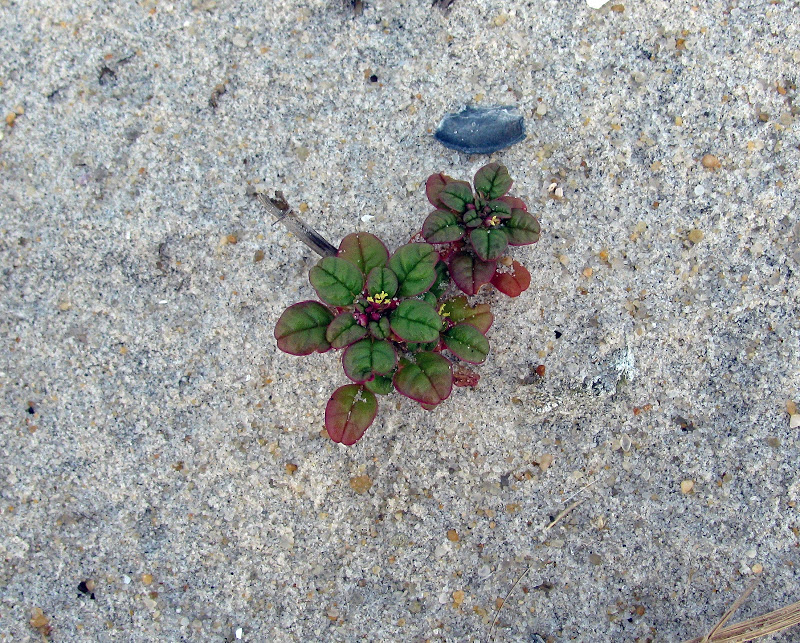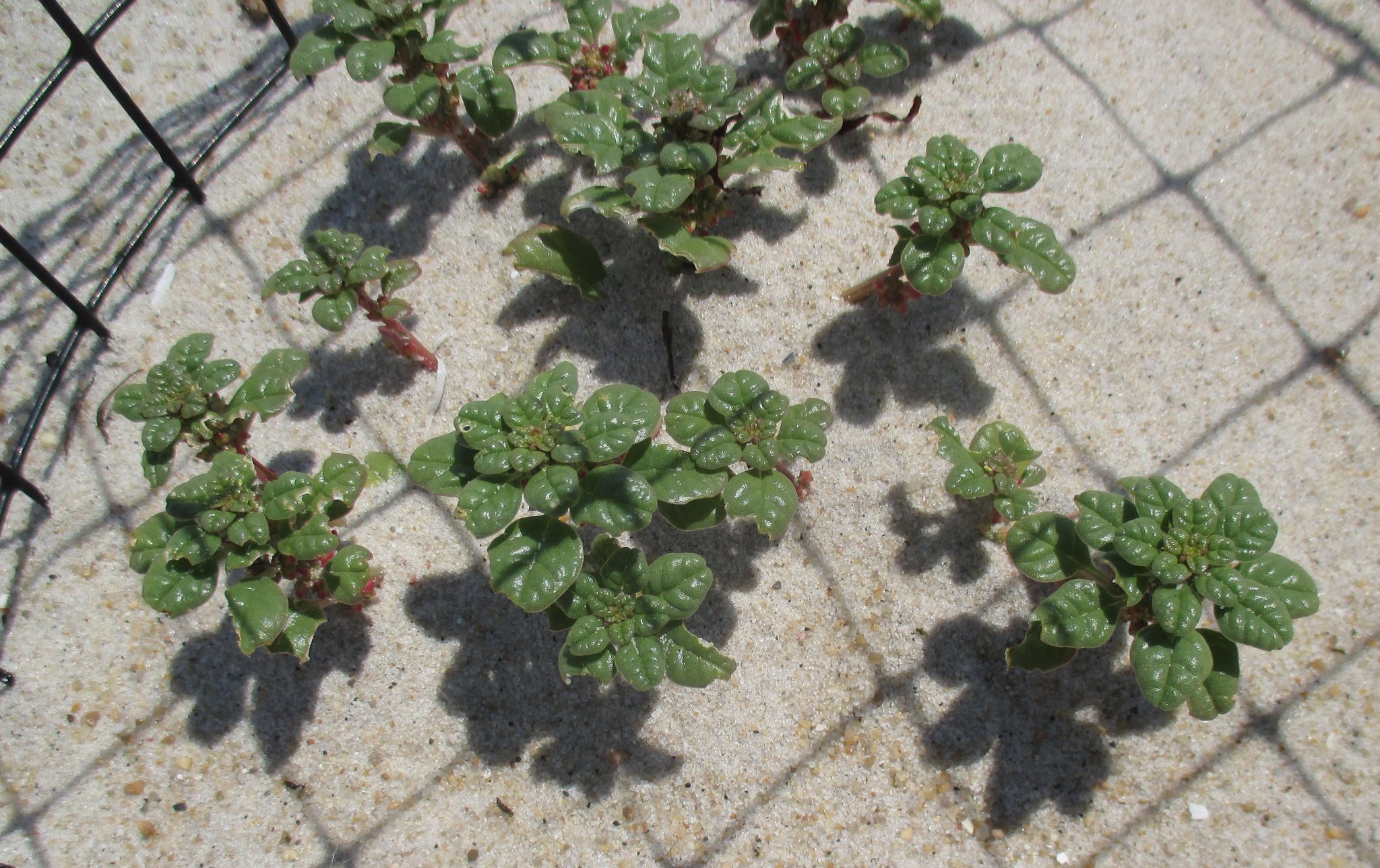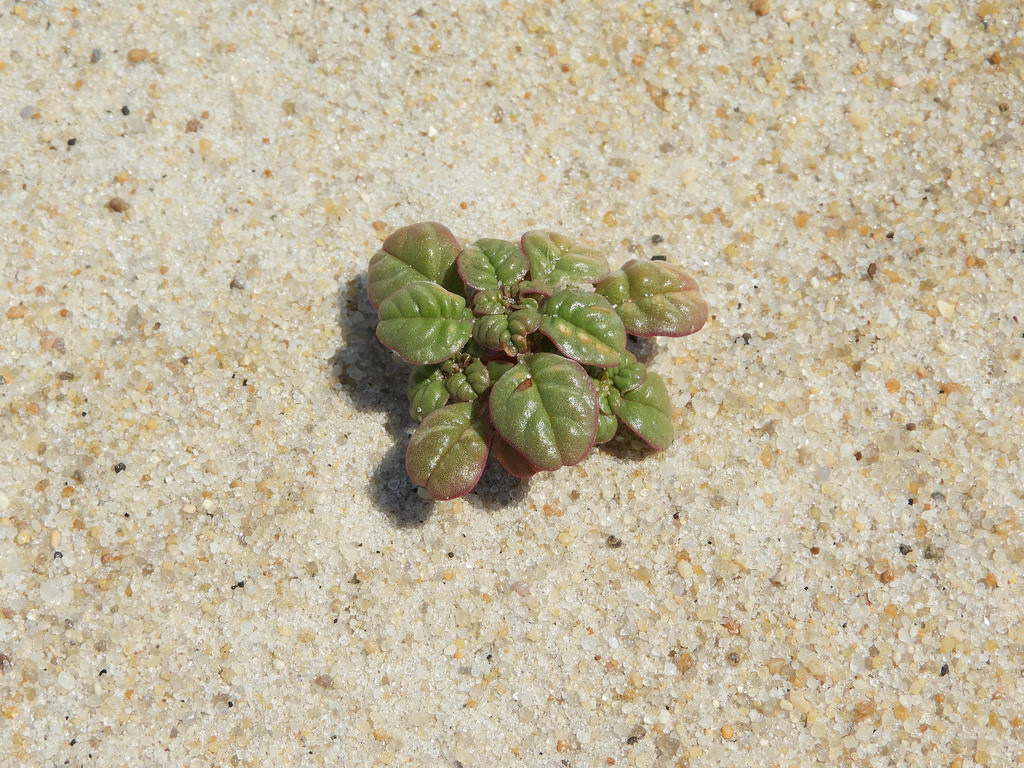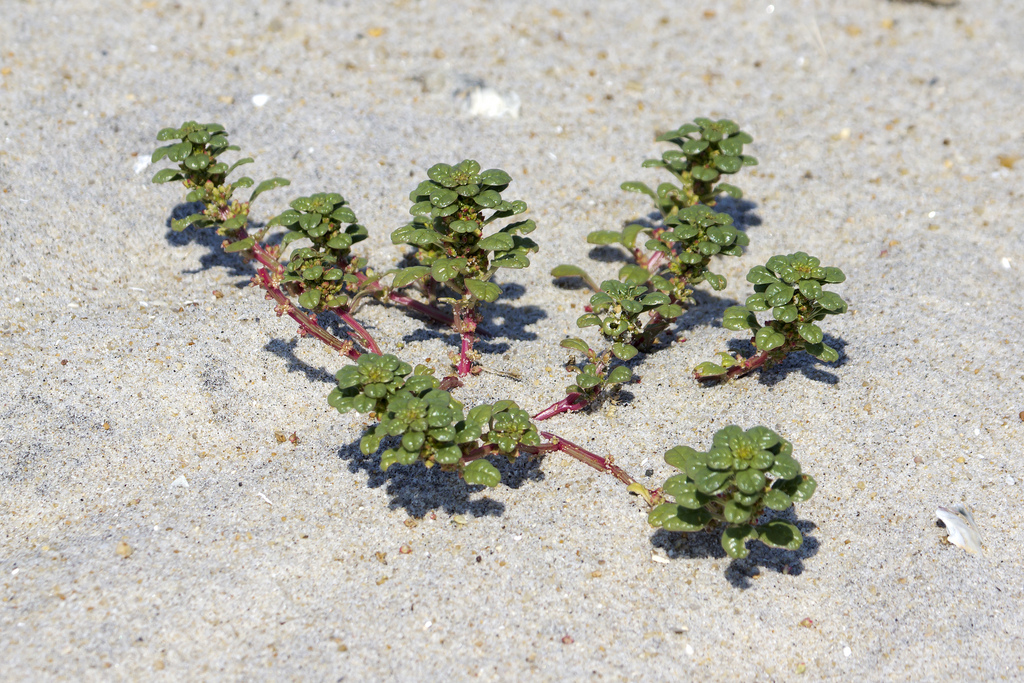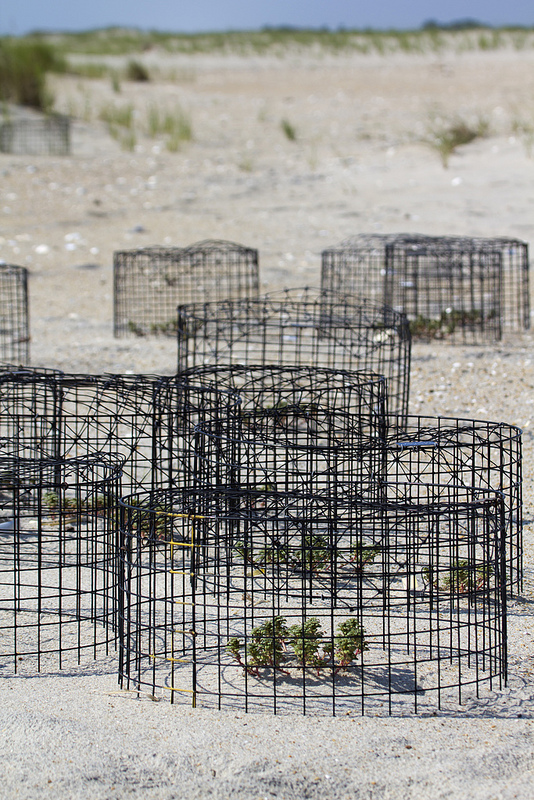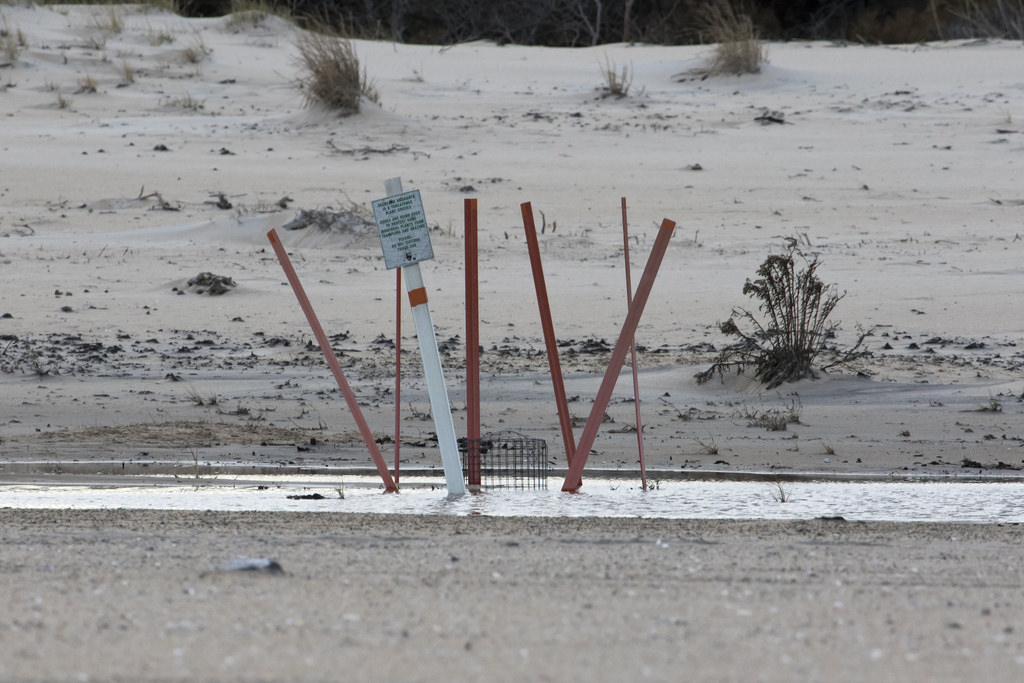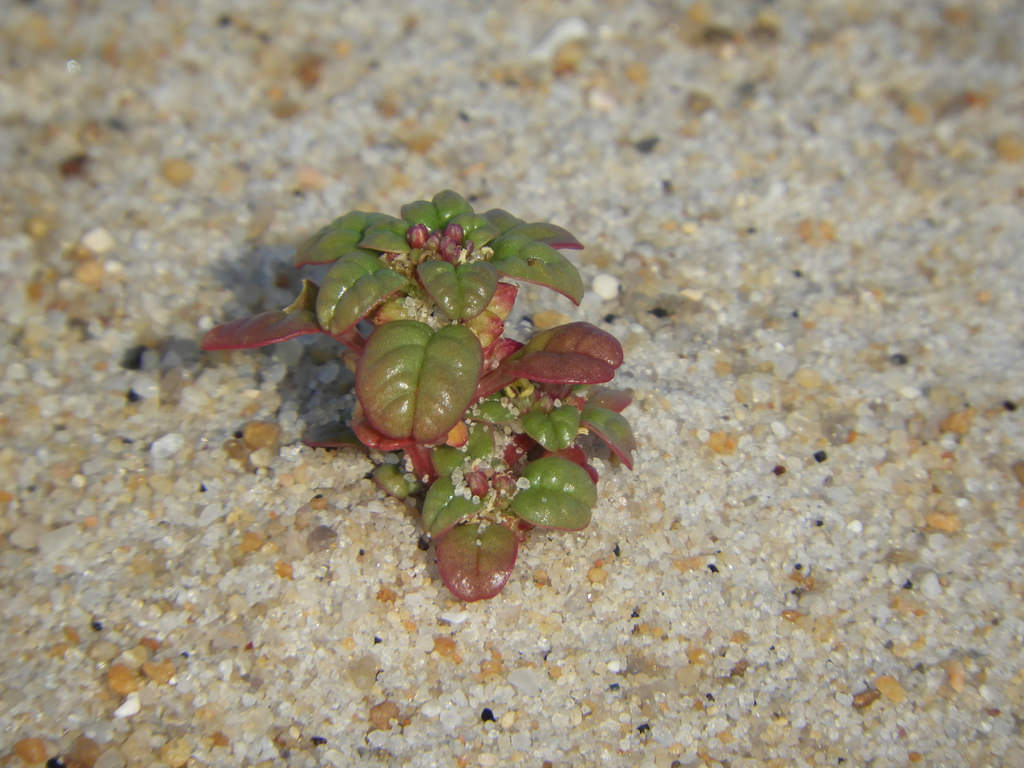

 Synonyms: Seabeach Amaranth.
Synonyms: Seabeach Amaranth.
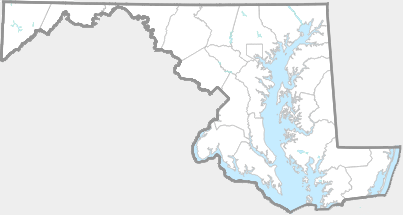
Seaside Amaranth (also called Seabeach Amaranth), a native species, is Endangered in Maryland. With fewer than 50 populations worldwide, it is globally and federally Threatened, as well. In the United States, it grows in beach habitat along the Atlantic Ocean. This annual plant forms clumps just above the high-water mark at the base of sand dunes, in sparsely vegetated, low-diversity habitat. It once ranged from southern Massachusetts to South Carolina, but has been eliminated from 2/3 of its former range. In the late 1960s, Seaside Amaranth disappeared from Maryland's barrier islands, but now Maryland is one of a few states where it is growing, with an assist from park biologists at Assateague Island National Seashore. It also has been reintroduced in Massachusetts and North Carolina. The plant seems to need extensive areas of naturally dynamic, dune and barrier-island habitat, where, as a prolifically seeding annual, it can spread its seeds widely and "move" around from year to year as a "fugitive" species in the landscape, colonizing appropriate habitat as it becomes available.
According to Resource Brief - Seabeach Amaranth, published by the National Park Service/Assateague Island National Seashore and updated Feb. 15, 2021, a park biologist discovered a single plant on Assateague in 1998. This occasion marked the first time in over 30 years that amaranth had been observed on the island. By 2000 a total of 7 wild plants had been discovered. With these 7 plants, the National Park Service, along with other State and Federal agencies, began trying to restore a viable population to its native habitat on Assateague. Between 2000 and 2002, offspring from the original plants were planted at many locations along the Maryland portion of the island. The plantings suffered a high rate of mortality, likely due to plant shocking, strong winds, and planting in unsuitable habitat. Overgrazing by wild horses and deer may also have contributed. In addition, because Amaranth must compete with other plants for space, sunlight, water and soil nutrients, Amaranth plants depend on frequent storm surges to reduce competition and create new unoccupied habitat. Other threats to Seaside Amaranth include fencing and sea-wall construction, development, heavy beach recreational use, over-sand vehicle traffic (especially detrimental from June through September, the plant’s growing season), and the grazing by deer and feral horses. The fugitive nature of the plant makes it difficult to protect, but each year Assateague staff place wire mesh cages around some plants.
On Assateague, there are some other state or federally listed species requiring similar habitat, including tiger beetles, piping plovers, and seaside knotweed.
The stems are fleshy and pinkish-red or red, with small, rounded leaves. Inconspicuous flowers and fruits are borne in clusters beneath the leaves. Enormous quantities of the plant's very tiny seeds are produced, increasing the odds that new populations will be established each year.
Germination occurs from April to July, and the small unbranched sprig that develops soon branches into a clump that commonly reaches 30 cm in diameter and sometimes a meter or more.
Along the Atlantic coast and barrier islands, just above the high-water mark at the base of sand dunes, in sparsely vegetated habitat.
There are 19 records in the project database.
| GA | AL | WA | FR | CL | MO | HO | BA | BC | HA | CE | PG | AA | CV | CH | SM | KE | QA | CN | TA | DO | WI | SO | WO |
